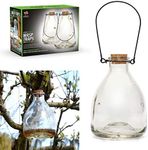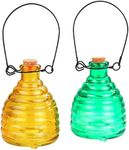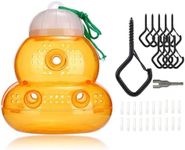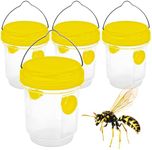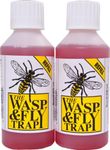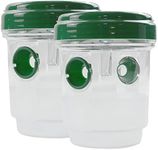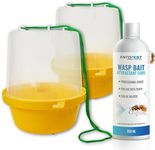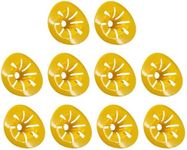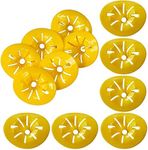Buying Guide for the Best Wasp Traps
Choosing the right wasp trap can make a significant difference in managing wasp populations around your home or garden. The key is to understand the different types of traps available and how they work, as well as considering the specific needs of your environment. By focusing on the key specifications, you can select a trap that is both effective and safe for your situation.Type of TrapWasp traps come in various types, including bait traps, electric traps, and sticky traps. The type of trap is important because it determines how the wasps are attracted and captured. Bait traps use attractants to lure wasps inside, where they cannot escape. Electric traps use a light or other attractant to draw wasps in and then electrocute them. Sticky traps capture wasps on a glue surface. Consider your environment and the severity of the wasp problem when choosing a type. Bait traps are generally effective for outdoor use, while electric traps might be more suitable for indoor or covered areas. Sticky traps are often used in smaller, specific areas.
AttractantThe attractant is a crucial component of a wasp trap as it determines how effectively the trap can lure wasps. Attractants can be chemical-based or natural, such as sweet substances or pheromones. The choice of attractant should be based on the type of wasps you are dealing with and any environmental concerns you might have. Chemical attractants are often more potent but may not be suitable for use around food or children. Natural attractants are safer but may require more frequent replacement. Consider the location and safety requirements when selecting an attractant.
Coverage AreaThe coverage area of a wasp trap indicates how large of an area it can effectively protect. This is important because it helps you determine how many traps you might need for your space. Coverage can range from small, localized areas to larger, open spaces. If you have a large garden or yard, you may need multiple traps to cover the entire area. For smaller patios or balconies, a single trap with a smaller coverage area might suffice. Assess the size of the area you need to protect to choose the right coverage.
DurabilityDurability refers to how well the trap can withstand environmental conditions such as rain, wind, and sun exposure. This is important for ensuring the trap remains effective over time. Traps made from durable materials like heavy-duty plastic or metal are better suited for outdoor use, as they can withstand harsh weather conditions. If you plan to use the trap indoors or in a sheltered area, durability may be less of a concern. Consider where you will place the trap and the typical weather conditions in your area when evaluating durability.
Ease of UseEase of use encompasses how simple it is to set up, maintain, and clean the wasp trap. This is important for ensuring that the trap remains effective and convenient to use. Some traps require regular maintenance, such as refilling bait or cleaning out dead wasps, while others are more hands-off. If you prefer a low-maintenance option, look for traps that are easy to set up and require minimal upkeep. Consider your willingness to perform regular maintenance when choosing a trap.

